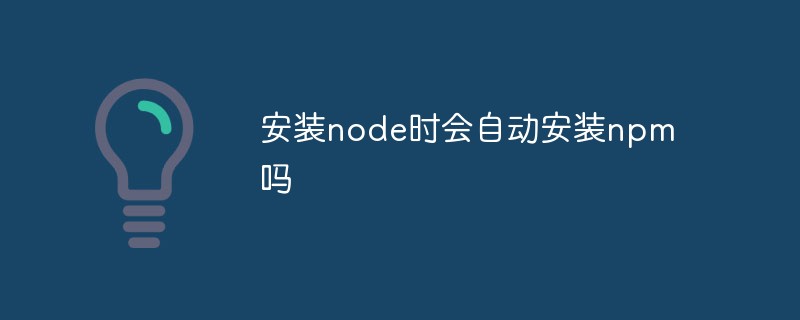이 기사에서는 실제 노드 정적 파일 서버의 예를 주로 소개하고 참고할 수 있도록 하겠습니다.
이 글에서는 실제 노드 정적 파일 서버의 예시를 주로 소개하고, 자세한 내용은 다음과 같습니다.
지원 기능:
정적 파일 읽기
디렉토리에 액세스하면 자동으로 찾을 수 있습니다. index.html 파일 다음에 index.html이 없으면 파일 목록을 나열
MIME 유형 지원
캐시 지원/제어
gzip 압축 지원
-
범위 지원, 중단점 재개
전역 명령 실행
하위 프로세스 실행
1. 정적 파일을 읽는 서비스 만들기
먼저 http 모듈을 소개하고, 서버를 만들고, 구성된 포트를 수신합니다.
const http = require('http');
const server = http.createServer();
// 监听请求
server.on('request', request.bind(this));
server.listen(config.port, () => {
console.log(`静态文件服务启动成功, 访问localhost:${config.port}`);
});Write 특히 요청을 처리하고 정적 파일을 반환하기 위한 fn, url 모듈은 다음 경로를 얻습니다.
const url = require('url');
const fs = require('fs');
function request(req, res) {
const { pathname } = url.parse(req.url); // 访问路径
const filepath = path.join(config.root, pathname); // 文件路径
fs.createReadStream(filepath).pipe(res); // 读取文件,并响应
}index.html 검색 지원:
if (pathname === '/') {
const rootPath = path.join(config.root, 'index.html');
try{
const indexStat = fs.statSync(rootPath);
if (indexStat) {
filepath = rootPath;
}
} catch(e) {
}
}디렉토리에 액세스할 때 파일 디렉터리 나열:
fs.stat(filepath, (err, stats) => {
if (err) {
res.end('not found');
return;
}
if (stats.isDirectory()) {
let files = fs.readdirSync(filepath);
files = files.map(file => ({
name: file,
url: path.join(pathname, file)
}));
let html = this.list()({
title: pathname,
files
});
res.setHeader('Content-Type', 'text/html');
res.end(html);
}
}html 템플릿:
function list() {
let tmpl = fs.readFileSync(path.resolve(__dirname, 'template', 'list.html'), 'utf8');
return handlebars.compile(tmpl);
}
<!DOCTYPE html>
<html lang="en">
<head>
<meta charset="UTF-8">
<meta name="viewport" content="width=device-width, initial-scale=1.0">
<meta http-equiv="X-UA-Compatible" content="ie=edge">
<title>{{title}}</title>
</head>
<body>
<h1 id="hope-server静态文件服务器">hope-server静态文件服务器</h1>
<ul>
{{#each files}}
<li>
<a href={{url}}>{{name}}</a>
</li>
{{/each}}
</ul>
</body>
</html>2. MIME 유형 지원
mime 모듈을 사용하여 파일 유형을 가져오고 인코딩을 설정합니다:
res.setHeader('Content-Type', mime.getType(filepath) + ';charset=utf-8');
3. 캐시 지원
http 프로토콜 캐시:
Cache-Control: http1.1 콘텐츠, 클라이언트에게 방법을 알려줍니다. 캐시 데이터 및 규칙
개인 클라이언트는 캐시할 수 있습니다
공개 클라이언트와 프록시 서버 모두 캐시할 수 있습니다.
max-age=60 캐시된 콘텐츠는 60초 후에 만료됩니다.
캐시하지 않습니다. 비교 캐시를 사용하여 데이터를 확인하고 원본 서버에서 다시 확인하도록 강제해야 합니다.
no-store 모든 콘텐츠가 캐시되지 않으며 강제 캐싱이나 비교 캐싱이 실행되지 않습니다
만료: http1. 0 콘텐츠인 경우 캐시 제어가 이를 무시하고 캐시가 만료되는 시기를 클라이언트에 알려줍니다
ETag: 콘텐츠 해시 다음 클라이언트 요청의 경우 if-none-match: etag 값을 요청 헤더에 추가하세요
Last-Modified : 마지막 수정 시간. 요청 헤더에 if-modified-since: Last-Modified 값을 추가하세요.
handleCache(req, res, stats, hash) {
// 当资源过期时, 客户端发现上一次请求资源,服务器有发送Last-Modified, 则再次请求时带上if-modified-since
const ifModifiedSince = req.headers['if-modified-since'];
// 服务器发送了etag,客户端再次请求时用If-None-Match字段来询问是否过期
const ifNoneMatch = req.headers['if-none-match'];
// http1.1内容 max-age=30 为强行缓存30秒 30秒内再次请求则用缓存 private 仅客户端缓存,代理服务器不可缓存
res.setHeader('Cache-Control', 'private,max-age=30');
// http1.0内容 作用与Cache-Control一致 告诉客户端什么时间,资源过期 优先级低于Cache-Control
res.setHeader('Expires', new Date(Date.now() + 30 * 1000).toGMTString());
// 设置ETag 根据内容生成的hash
res.setHeader('ETag', hash);
// 设置Last-Modified 文件最后修改时间
const lastModified = stats.ctime.toGMTString();
res.setHeader('Last-Modified', lastModified);
// 判断ETag是否过期
if (ifNoneMatch && ifNoneMatch != hash) {
return false;
}
// 判断文件最后修改时间
if (ifModifiedSince && ifModifiedSince != lastModified) {
return false;
}
// 如果存在且相等,走缓存304
if (ifNoneMatch || ifModifiedSince) {
res.writeHead(304);
res.end();
return true;
} else {
return false;
}
}4. Compression 클라이언트는 요청을 통해 어떤 압축 형식이 지원되는지 서버에 알려줍니다. 헤더 Accept-Encoding: gzip, deflate. 서버는 지원되는 압축 형식에 따라 콘텐츠를 압축합니다. 서버에서 지원하지 않으면 압축이 수행되지 않습니다.
getEncoding(req, res) {
const acceptEncoding = req.headers['accept-encoding'];
// gzip和deflate压缩
if (/\bgzip\b/.test(acceptEncoding)) {
res.setHeader('Content-Encoding', 'gzip');
return zlib.createGzip();
} else if (/\bdeflate\b/.test(acceptEncoding)) {
res.setHeader('Content-Encoding', 'deflate');
return zlib.createDeflate();
} else {
return null;
}
}5. 재개 가능한 업로드서버는 요청 헤더의 Range: bytes=0-xxx를 사용하여 Range 요청을 하고 있는지 확인합니다. 이 값이 존재하고 유효한 경우 파일 콘텐츠의 요청된 부분만 사용됩니다. 응답 상태 코드는 206이 되어 Partial Content를 나타내며 Content-Range가 설정됩니다. 유효하지 않은 경우 요청 범위가 만족스럽지 않음을 나타내는 416 상태 코드가 반환됩니다. Range 요청 헤더가 포함되지 않은 경우 계속해서 일반적인 방식으로 응답합니다.
getStream(req, res, filepath, statObj) {
let start = 0;
let end = statObj.size - 1;
const range = req.headers['range'];
if (range) {
res.setHeader('Accept-Range', 'bytes');
res.statusCode = 206;//返回整个内容的一块
let result = range.match(/bytes=(\d*)-(\d*)/);
if (result) {
start = isNaN(result[1]) ? start : parseInt(result[1]);
end = isNaN(result[2]) ? end : parseInt(result[2]) - 1;
}
}
return fs.createReadStream(filepath, {
start, end
});
}6. 전역 명령 실행npm 링크를 통해 달성
- npm 패키지 디렉터리에 대한 소프트 링크를 생성하고 이를 {prefix}/lib/node_modules/
- 실행 파일 생성(bin ) 소프트 링크, {prefix}/bin/{name}
{
bin: {
"hope-server": "bin/hope"
}
}프로젝트 아래에 bin 디렉터리 희망 파일을 생성하고 yargs를 사용하여 매개변수를 전달하도록 명령줄을 구성합니다
// 告诉电脑用node运行我的文件
#! /usr/bin/env node
const yargs = require('yargs');
const init = require('../src/index.js');
const argv = yargs.option('d', {
alias: 'root',
demand: 'false',
type: 'string',
default: process.cwd(),
description: '静态文件根目录'
}).option('o', {
alias: 'host',
demand: 'false',
default: 'localhost',
type: 'string',
description: '配置监听的主机'
}).option('p', {
alias: 'port',
demand: 'false',
type: 'number',
default: 8080,
description: '配置端口号'
}).option('c', {
alias: 'child',
demand: 'false',
type: 'boolean',
default: false,
description: '是否子进程运行'
})
.usage('hope-server [options]')
.example(
'hope-server -d / -p 9090 -o localhost', '在本机的9090端口上监听客户端的请求'
).help('h').argv;
// 启动服务
init(argv);7 실행 중인 하위 프로세스spawnindex.js
const { spawn } = require('child_process');
const Server = require('./hope');
function init(argv) {
// 如果配置为子进程开启服务
if (argv.child) {
//子进程启动服务
const child = spawn('node', ['hope.js', JSON.stringify(argv)], {
cwd: __dirname,
detached: true,
stdio: 'inherit'
});
//后台运行
child.unref();
//退出主线程,让子线程单独运行
process.exit(0);
} else {
const server = new Server(argv);
server.start();
}
}
module.exports = init;
hope.js
if (process.argv[2] && process.argv[2].startsWith('{')) {
const argv = JSON.parse(process.argv[2]);
const server = new Hope(argv);
server.start();
} 8. 소스 코드 및 테스트소스 코드 주소: hope-servernpm install hope-server -g어느 디렉토리든 입력하세요
hope-server위 내용은 제가 모두를 위해 정리한 내용입니다. 앞으로 모든 분들께 도움이 되길 바랍니다. 관련 기사:
JS에서 문자열 접합 기능을 구현하는 방법(String.prototype.format 확장)
ES6를 사용하여 WeakMap을 통해 메모리 누수 문제 해결(상세 튜토리얼)
구현 방법 JavaScript WeChat ID 무작위 전환 코드를 통해 (자세한 튜토리얼)
위 내용은 실제 노드 정적 파일 서버의 샘플 코드의 상세 내용입니다. 자세한 내용은 PHP 중국어 웹사이트의 기타 관련 기사를 참조하세요!
 node、nvm与npm有什么区别Jul 04, 2022 pm 04:24 PM
node、nvm与npm有什么区别Jul 04, 2022 pm 04:24 PMnode、nvm与npm的区别:1、nodejs是项目开发时所需要的代码库,nvm是nodejs版本管理工具,npm是nodejs包管理工具;2、nodejs能够使得javascript能够脱离浏览器运行,nvm能够管理nodejs和npm的版本,npm能够管理nodejs的第三方插件。
 Vercel是什么?怎么部署Node服务?May 07, 2022 pm 09:34 PM
Vercel是什么?怎么部署Node服务?May 07, 2022 pm 09:34 PMVercel是什么?本篇文章带大家了解一下Vercel,并介绍一下在Vercel中部署 Node 服务的方法,希望对大家有所帮助!
 node爬取数据实例:聊聊怎么抓取小说章节May 02, 2022 am 10:00 AM
node爬取数据实例:聊聊怎么抓取小说章节May 02, 2022 am 10:00 AMnode怎么爬取数据?下面本篇文章给大家分享一个node爬虫实例,聊聊利用node抓取小说章节的方法,希望对大家有所帮助!
 node导出模块有哪两种方式Apr 22, 2022 pm 02:57 PM
node导出模块有哪两种方式Apr 22, 2022 pm 02:57 PMnode导出模块的两种方式:1、利用exports,该方法可以通过添加属性的方式导出,并且可以导出多个成员;2、利用“module.exports”,该方法可以直接通过为“module.exports”赋值的方式导出模块,只能导出单个成员。
 安装node时会自动安装npm吗Apr 27, 2022 pm 03:51 PM
安装node时会自动安装npm吗Apr 27, 2022 pm 03:51 PM安装node时会自动安装npm;npm是nodejs平台默认的包管理工具,新版本的nodejs已经集成了npm,所以npm会随同nodejs一起安装,安装完成后可以利用“npm -v”命令查看是否安装成功。
 node中是否包含dom和bomJul 06, 2022 am 10:19 AM
node中是否包含dom和bomJul 06, 2022 am 10:19 AMnode中没有包含dom和bom;bom是指浏览器对象模型,bom是指文档对象模型,而node中采用ecmascript进行编码,并且没有浏览器也没有文档,是JavaScript运行在后端的环境平台,因此node中没有包含dom和bom。
 聊聊Node.js path模块中的常用工具函数Jun 08, 2022 pm 05:37 PM
聊聊Node.js path模块中的常用工具函数Jun 08, 2022 pm 05:37 PM本篇文章带大家聊聊Node.js中的path模块,介绍一下path的常见使用场景、执行机制,以及常用工具函数,希望对大家有所帮助!


핫 AI 도구

Undresser.AI Undress
사실적인 누드 사진을 만들기 위한 AI 기반 앱

AI Clothes Remover
사진에서 옷을 제거하는 온라인 AI 도구입니다.

Undress AI Tool
무료로 이미지를 벗다

Clothoff.io
AI 옷 제거제

AI Hentai Generator
AI Hentai를 무료로 생성하십시오.

인기 기사

뜨거운 도구

SublimeText3 Mac 버전
신 수준의 코드 편집 소프트웨어(SublimeText3)

PhpStorm 맥 버전
최신(2018.2.1) 전문 PHP 통합 개발 도구

Atom Editor Mac 버전 다운로드
가장 인기 있는 오픈 소스 편집기

mPDF
mPDF는 UTF-8로 인코딩된 HTML에서 PDF 파일을 생성할 수 있는 PHP 라이브러리입니다. 원저자인 Ian Back은 자신의 웹 사이트에서 "즉시" PDF 파일을 출력하고 다양한 언어를 처리하기 위해 mPDF를 작성했습니다. HTML2FPDF와 같은 원본 스크립트보다 유니코드 글꼴을 사용할 때 속도가 느리고 더 큰 파일을 생성하지만 CSS 스타일 등을 지원하고 많은 개선 사항이 있습니다. RTL(아랍어, 히브리어), CJK(중국어, 일본어, 한국어)를 포함한 거의 모든 언어를 지원합니다. 중첩된 블록 수준 요소(예: P, DIV)를 지원합니다.

Dreamweaver Mac版
시각적 웹 개발 도구

뜨거운 주제
 1371
1371 52
52 38
38 19
19




